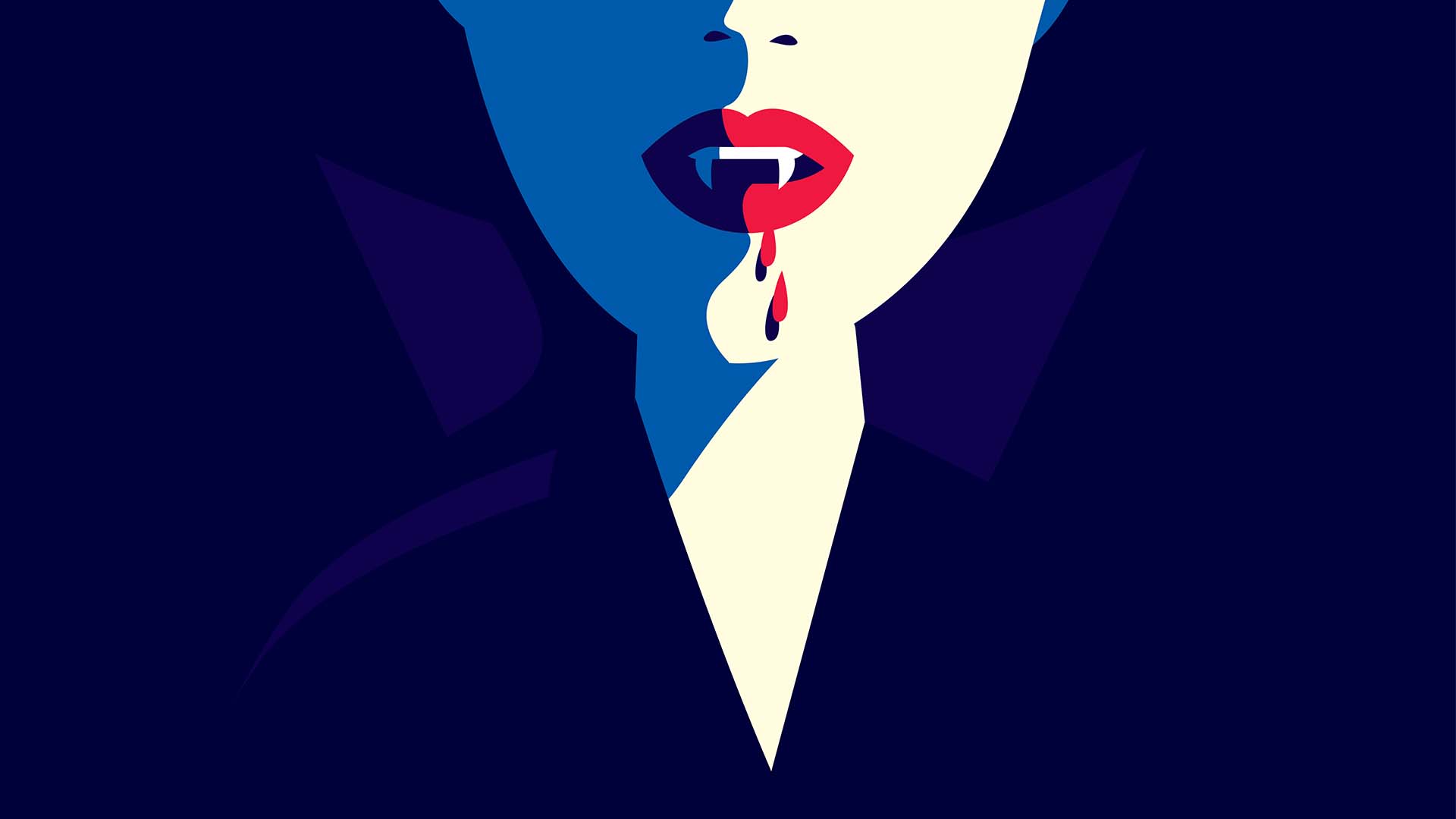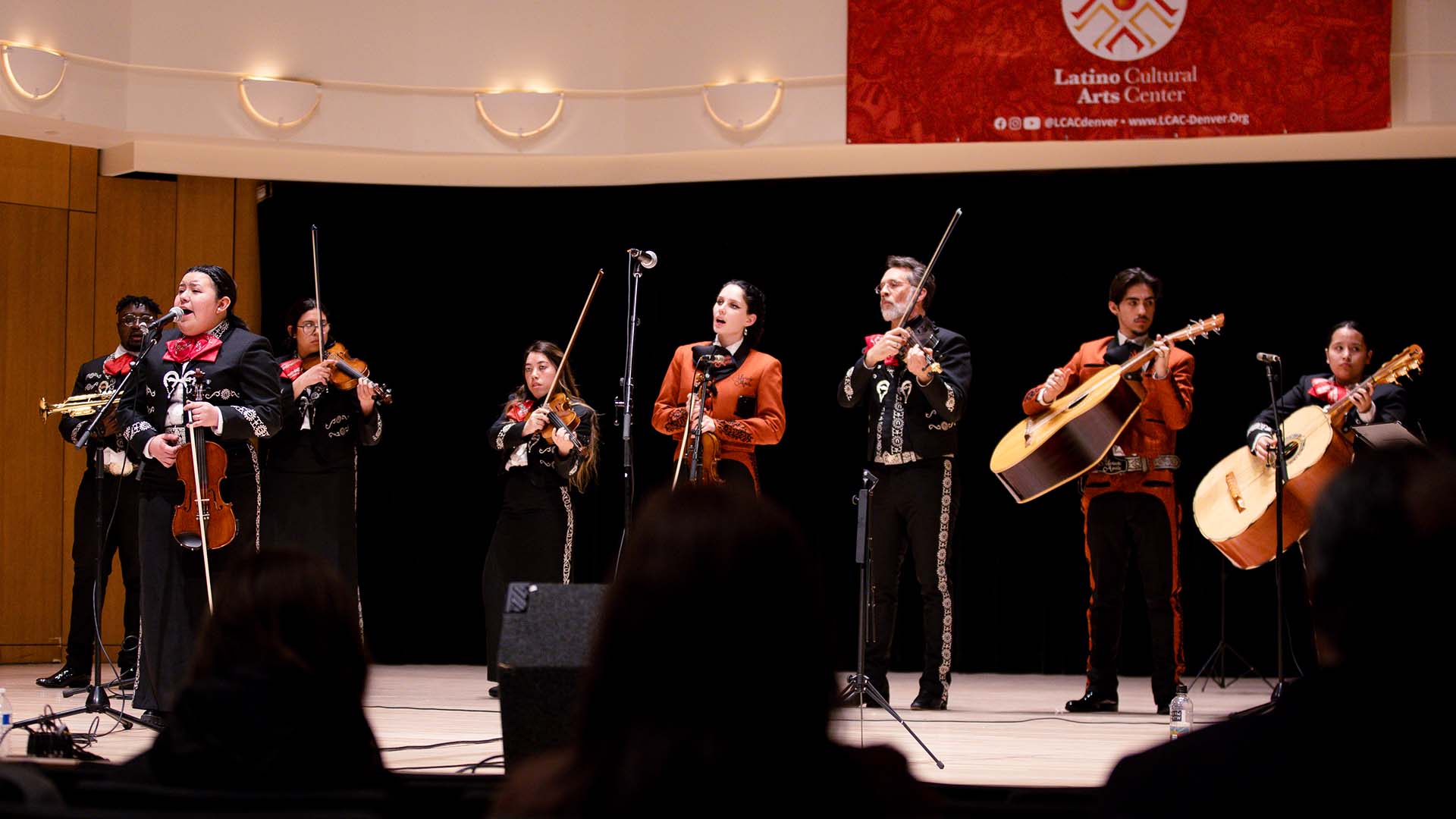Why vampires get our blood pumping
An expert in monster studies explains why the creatures of the night have remained popular for over a hundred years.

Vampires are unique in the world of monsters. Unlike mermaids, sasquatches, werewolves and zombies, whose portrayals have remained fairly static in popular media, vampires have evolved considerably over the decades.
From Nosferatu to Nandor, the vampire character’s extreme versatility has contributed to its enduring popularity, said Charles Hoge, Ph.D., senior lecturer in the Department of English at Metropolitan State University of Denver.
“I think they’ve remained popular because vampires are the perfect avatar for human fear and anxiety. The vampire can always stand in for whatever we’re afraid of,” said Hoge, who’s taught the Vampire Films course at MSU Denver for over 10 years. “The vampire can show us how to confront it, how to defeat it.”
In their earliest iterations, going back to Eastern European medieval folklore, vampires were known as revenants and were grotesque, undead creatures that were once human but had turned supernatural and predatory during the transition to death. They served as explanations for the mysterious forces behind disease and decomposition.
For example, when an epidemic broke out in the 10th or 15th century, people would dig up patient zero, Hoge said. To survivors suddenly confronted with the natural but gruesome processes of death, the corpses resembled supernatural organisms that were feeding on people and drinking their blood.
“I think our version of the vampire is that folkloric version of us finding a story and finding a narrative to deal with decomposition, because we didn’t really know how to interpret it otherwise,” Hoge said.

Today, vampires are often shown as the exact opposite of their original incarnations. Hoge describes Edward Cullen from the “Twilight” franchise as a “sparkly vampire” with a romantic bent. In the early 2000’s, shows such as “The Vampire Diaries” and “True Blood” aligned with this aesthetic, accentuating vampire qualities such as eternal youth and sexuality.
But it’s an expanding universe, Hoge added.
“I think we’re having reactions to that now. We’re having vampires get a little bit more grotesque in their appearance. We have films like ‘Sinners’ that are coming out to help us to see more expansive, and more useful, story worlds.”
Students in the Vampire Films class, which is the most popular general education class in the English Department, help expose Hoge to the latest interpretations. Whether through films, graphic novels or video games, students come to the class familiar with vampires and prepared to discuss their experiences.
RELATED: Forgotten film rises from the dead
One such student is English major Kyle Bridston, who grew up watching films such as “The Lost Boys” and “Dracula.” He took Hoge’s Vampire Films class last semester to learn more about the origins of vampires and gain a deeper understanding of the genre. He was excited to learn about the different rules surrounding vampirism, as well as the myriad methods that characters in films have used to defeat the monsters.
Charles Hoge’s Top 11 Vampire Films1. “Nosferatu: A Symphony of Horror” (F.W. Murnau, 1922)
|
|
He sees two sources of vampires’ enduring popularity: their likeness to humans and their complexity.
“I think there’s something that really intrigues people about a monster that is kind of human, kind of not,” he said. “And you have all these different, complicated depictions of vampires ranging from fully monster, like Dracula, to very human-esque vampires, like Edward from ‘Twilight.’ So, part of it is just because there’s a lot of complexity with how vampires are represented.”
Literal and figurative shapeshifters, vampires offer a wealth of topics for exploration and discussion. So much so that Bridston and Hoge wouldn’t be surprised if we’re still talking about them 100 years from now.
“A vampire can kind of vanish into the shadows somewhere, reconfigure itself, figure out what we’re afraid of currently, and then reemerge,” Hoge said. “And so it can just endlessly restore itself, a vampire narrative, very much like a vampire itself. You just can’t kill the thing.”
Learn more about English majors at MSU Denver.







